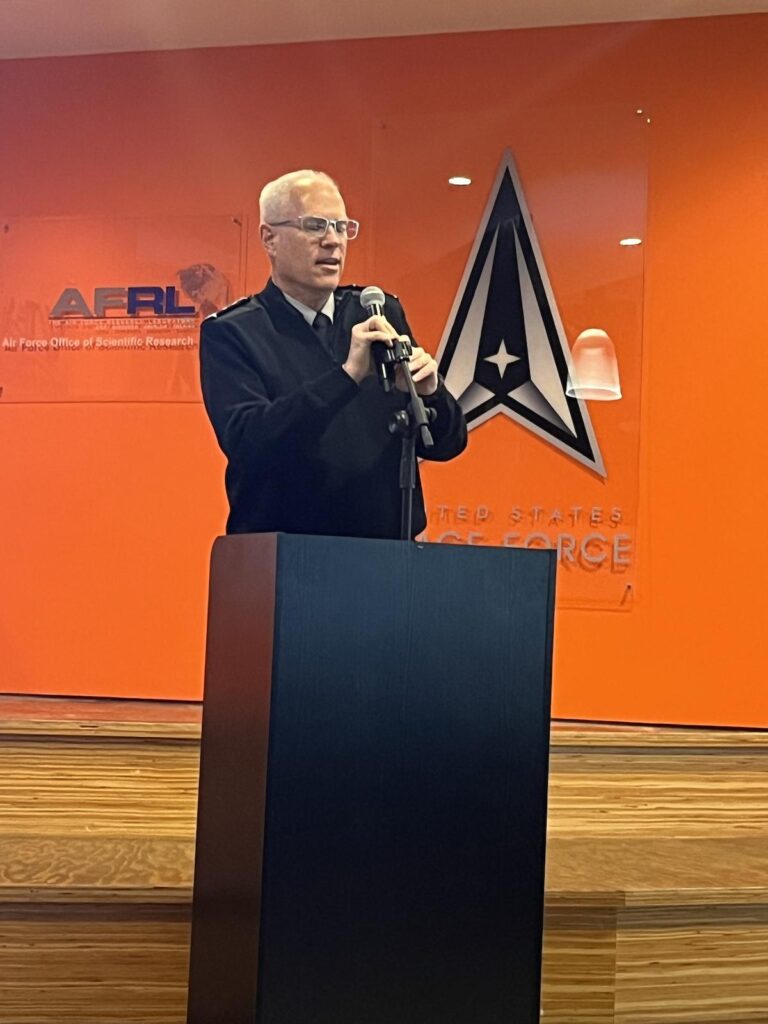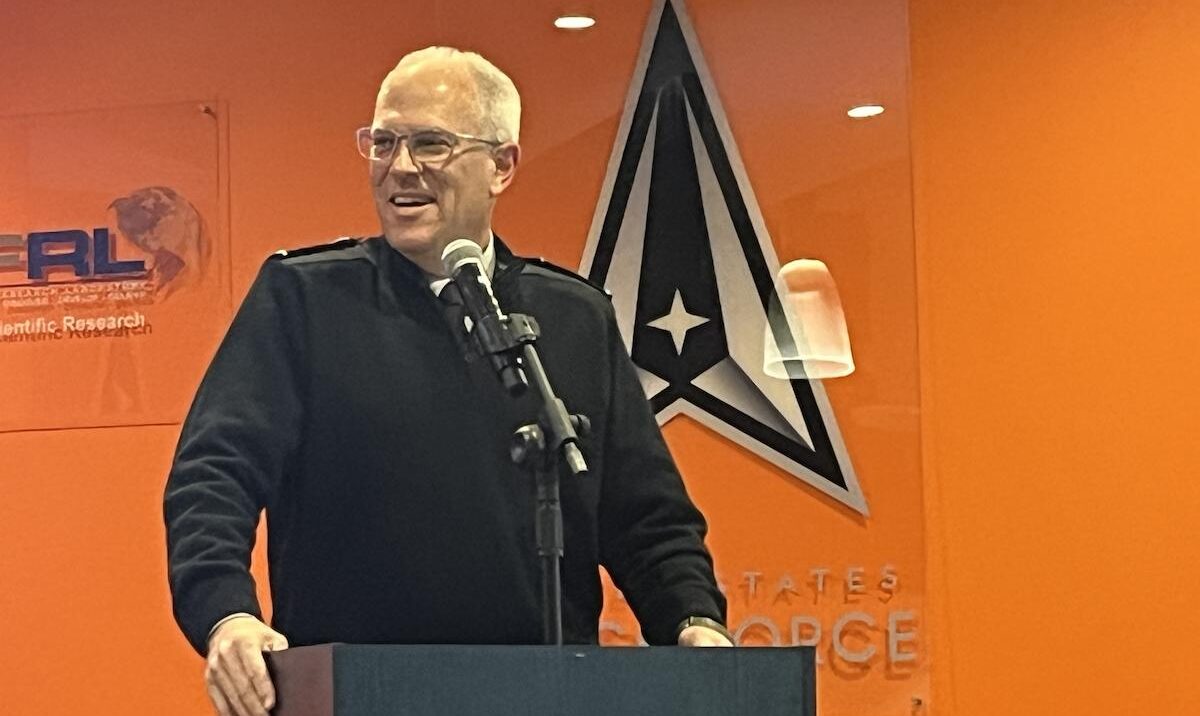Space Systems Command (SSC), the acquisition arm of the U.S. Space Force leads the charge in terms of how America develops, fields and sustains space capabilities. In a recent candid Q&A session, Lt. Gen. Philip Garrant, SSC’s commander, offered insights into the command’s evolving approach to personnel management, acquisition reform, commercial partnerships and the integration of advanced technologies. Here’s a deep dive into these latest updates and what they mean for industry, government and the future of the space domain.
Personnel Projections: Navigating Workforce Shifts
Lt. Gen. Garrant addressed the pressing issue of workforce dynamics amid rising budget authority. Over the past three years, SSC’s budget has grown by 35–50%, yet the civilian and military workforce has not kept pace. This has created not only a significant talent gap, but the potential for program bottlenecks.
Anticipated federal budget reductions, facility drawdowns and the potential loss of hundreds of positions across the Department of the Air Force, including SSC could further exacerbate this imbalance. Additionally, pandemic-era shifts to remote hiring has expanded SSC’s access to talent nationwide but also introduced retention risks, as remote employees may seek opportunities elsewhere.
Despite these challenges, Garrant sees opportunity for both government and industry. As experienced federal employees take voluntary departures, industry partners should be encouraged by the ability to recruit this highly skilled talent pool, particularly in contracting, engineering, and security roles. He emphasized the need for industry to recognize the value of former SSC personnel. “If you’re growing and looking to hire, seek out these folks…bring them onto your teams,” he said.
Acquisition Reform: Streamlining for Speed and Flexibility

The acquisition landscape continues to undergo rapid changes, with executive orders and legislative proposals, such as the “Fostering Reform and Government Efficiency in Defense Act” or “FoRGED Act,” aimed at streamlining federal contracting. Garrant highlighted several key developments.
- Simplifying Regulations: Anticipated changes to the Federal Acquisition Regulation (FAR) could reduce regulatory burdens. This should make it easier for companies to contract with SSC. “If the FAR is smaller, it makes it easier…” Garrant explained, noting that fewer pages should translate to faster onboarding for industry partners.
- Innovative Vehicles: SSC is leveraging non-traditional acquisition vehicles, such as Commercial Solutions Openings (CSOs), to accelerate technology adoption and reduce time to fielding.
- Mission Health as a System: By fostering direct communication between operators and buyers at all levels, SSC is solving problems faster and more efficiently, with plans to expand this collaborative framework across the organization.
Garrant remains optimistic about these reforms. He believes they will “better align funds inside portfolios” and help SSC mitigate workforce and budget risks while maintaining mission execution.
Acquisition and Compliance: Balancing Speed with Security
While acquisition reform is reducing some barriers, compliance, especially in cybersecurity, remains a critical concern. SSC is closely involved in shaping requirements and ensuring that new policies do not inadvertently exclude innovative commercial solutions.
As new cyber compliance standards (like Cybersecurity Maturity Model Certification or CMMC) evolve, SSC continues to advocate for a balanced approach that maintains security without discouraging participation from commercial partners – a more risk-based, mission-driven approach. Garrant stressed the importance of not excluding companies “because they may not meet a cyber requirement.”
The Space Force is also rethinking how it writes requirements. It aims for more flexible, outcome-focused standards that will enable rapid integration of commercial technologies.
Partnering with SSC: Pathways for Industry and Innovators
SSC is actively seeking stronger partnerships with commercial providers, non-traditional defense companies and adjacent technology sectors. SSC recognizes the growing importance of dual-use and adjacent commercial technologies for space operations.
Garrant noted the challenge of aligning government and commercial interests, particularly when the government provides free services (like weather data) that can undercut commercial business cases. Companies must differentiate between selling data as a service to the government versus building a broader commercial customer base, he explained. SSC remains open to taking more risk with non-traditional providers, especially where commercial solutions can fill capability gaps quickly and cost-effectively. Here’s how companies can engage:
- Open Lines of Communication: Garrant encouraged innovators to reach out directly, promising to connect them with the right program offices and fix any barriers to engagement.
- Onboarding New Entrants: The Space Systems Launch (SSL) program’s Phase 3 is designed to bring in new providers and capabilities, with SSC “absolutely interested in new capabilities” for launch and propulsion technologies.
- Data as a Service: SSC is increasingly willing to buy commercial data as a service, especially in areas like weather and GPS, though companies must carefully consider their business models given the government’s role as a primary customer.
Garrant’s advice: “If you feel that the people who have the money and programs are not listening to you, let me know and I can fix that.”
AI, Human-Machine Teaming, and Advanced Analytics
Artificial intelligence and machine learning are becoming essential tools for SSC, both in acquisition and operations:
- Operational Integration: AI is critical for managing complex systems like missile defense and space-based interceptors, where rapid, semi-autonomous decision-making is required.
- Human-Machine Teaming: SSC is embracing human-machine teaming, particularly as operational demands outstrip the capacity of human crews to manage multiple satellites and systems.
- Network Security: Recent improvements in network accreditation are enabling wider adoption of AI tools across SSC’s classified and unclassified environments.
Garrant highlighted the need for “constant iteration of the data” and demonstration of system reliability to build trust with warfighters and decision-makers.
Space Futures Command: Shaping Tomorrow’s Force

SSC’s Task Force Futures, soon to become Space Futures Command, is tasked with charting the long-term trajectory of the Space Force: The new command will focus on concepts and technologies, wargaming and exercises, and force design analysis.
The goal is to rapidly transition game-changing technologies from lab to field and ensure the Space Force stays ahead of emerging threats and opportunities. New officers will be trained across operational, intelligence,and acquisition domains to build a versatile talent pipeline for the future.
Innovation Funding: The Lifeblood of Space Progress
Securing and sustaining innovation funding remains a challenge. Only a small portion of SSC’s budget is currently dedicated to innovation and program managers often reallocate these funds to cover shortfalls in major programs. SSC is working to establish dedicated innovation lines in its budget, with the hope that future funding increases will allow for more robust support of new ideas and rapid prototyping. Industry partners should emphasize the importance of innovation funding in their engagements with Congress and appropriators.
Deterrence, Lethality, and the Future of Space Operations
SSC’s contributions to strategic deterrence, particularly through missile warning and space domain awareness (SDA), are evolving to meet new threats. Garrant believes that demonstrating advanced capabilities, such as the Golden Dome missile defense concept, will strengthen deterrence by complicating adversary calculations and reinforcing U.S. resolve. He also noted the importance of transparency and declassification. Showing capability and commitment can sometimes prove as vital as the technologies themselves.
A Call to Action for Industry and Innovators
As the space domain becomes ever more contested and complex, SSC’s willingness to adapt, partner and innovate will be key to maintaining U.S. leadership in space. SSC stands at a pivotal moment as it balances the demands of a growing mission set with the realities of workforce, budget and technological change. Garrant’s open-door policy and SSC’s evolving acquisition approach both signal a new era of collaboration, agility and strategic focus. For industry, the message is clear: unprecedented opportunities to partner, innovate, and shape the future of space operations exist…and the results could just be out of this world.

